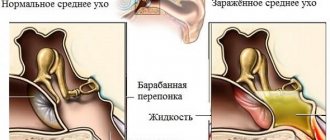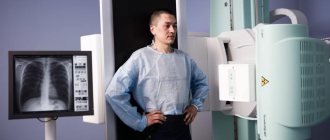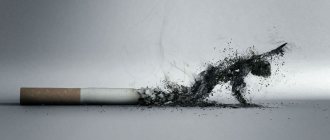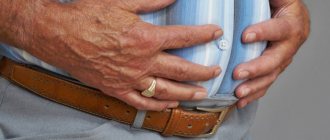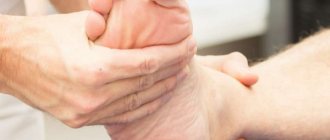Today it is considered absolutely commonplace for a person to work with hot objects and liquids. Every woman knows from her own experience about the pain that occurs if she scalds her hands with boiling water. We are taught what to do in this case at school, so we are not afraid of the possibility of burns. But states are different and may require different behavior from us.
In this article we will talk about what to do if you scald your hand with boiling water? We will learn how to give yourself proper first aid, and we will also figure out which drugs are best to use for treatment. Please read the information provided carefully in order to protect and equip yourself as much as possible.
What to do if you are burned by steam
Before starting treatment and providing first aid, it is necessary to assess the extent of damage and area. Next, there is a choice of method of assistance depending on the location of the lesion.
In case of skin burns, it is necessary to immediately cool the injured area. This can be done by placing the limb under a stream of cool water. If it is not possible to cool under running water, you can apply a compress or use a basin of water.
On average, the procedure takes about 20–30 minutes. It is acceptable to use pieces of ice previously wrapped in a clean textile napkin.
If the situation is complicated by the fact that tissue is stuck to the wound, then it is not recommended to tear it off. It’s better to carefully cut off the excess, and under running water it will most likely come off on its own.
Next, the wound is treated with an antiseptic. “Soft” solutions are suitable for this:
- chlorhexidine;
- miramistin.
Attention! Hydrogen peroxide, iodine or brilliant green are not recommended, as they can only worsen the situation.
For a speedy recovery, the burn is treated with Panthenol cream, Rescuer or Bepanten. If severe pain occurs, you can treat it with an anesthetic, and painkillers are taken orally.
The bandage should be loose and not compress.
To prevent harmful microorganisms from entering the affected area, apply a sterile anti-burn dressing or gauze. However, it should be free and not squeeze.
If the mucous membranes are burned, the injured area is immediately cooled, and the victim is sent to the hospital as soon as possible.
Varieties
Finger burns can be caused by high temperatures when in contact with boiling water, hot steam or hot objects.
Chemical injuries are no less common. They develop due to the action of aggressive agents on the skin - acids, alkalis, concentrated alcohols. Depending on the degree of damage to the epidermis, burns are divided into several categories:
- First. Redness is visible on the surface of the finger, mild pain and burning develops.
- Second. A blister forms on the finger, which is accompanied by severe pain.
- Third. Necrosis develops and a scab forms.
- Fourth. Not only the skin is damaged, but also soft tissues and bones.
There are two main types depending on the provoking factor. In addition, burns are divided according to the degree of damage.
The following types of burn injuries are distinguished:
- Chemical. It occurs due to skin contact with aggressive chemicals and can occur both at work and at home.
- Thermal. It is a reaction to the action of high temperatures on the skin of the fingers. As a rule, it occurs upon contact with steam or boiling water, as well as hot objects and open fire.
Degrees of injury:
- First. Occurs during short-term contact with chemicals or hot objects. Victims note redness of the affected area, pain and slight swelling.
- Second. Has all the symptoms described above, but the damage affects the deeper layers of the skin, resulting in the formation of blisters filled with a cloudy liquid on the fingers. Their size and number will depend on the extent of the damage.
- Third. Occurs during prolonged contact with chemicals or high temperatures. The skin becomes dark in color, and the formation of dead tissue is observed. If you receive such an injury, it is necessary to show the patient to a doctor as soon as possible; self-medication will not bring the desired results.
- Fourth. When such burns occur, there is a high risk to the life of the victim; he requires urgent hospitalization. Not only the skin is damaged, but also muscles, tendons, and bones. A fourth-degree burn to a finger almost always leads to amputation. Such an injury can occur as a result of an accident or fire.
Depending on the type and degree of injuries received, the patient will be provided with the necessary first aid. In case of third and fourth degree injuries, you must immediately call an ambulance, since incorrect actions in such cases can only harm the victim.
What is strictly forbidden to do in case of steam burns?
If you have received a thermal burn from steam, there are some actions that you should absolutely not do:
- do not tear off your clothes;
- do not touch the wound with dirty hands;
- it is unacceptable to cool under ice water;
- do not puncture the resulting blisters;
- do not treat burns with solutions that contain alcohol;
- Do not apply oil or fat-containing components to the wound;
- The bandage should be loose and not compress.
All these manipulations will only cause additional damage to health, prolong the recovery period and increase pain.
Principles for assessing burn severity
When assessing the extent of damage, the following factors are taken into account:
- the severity of the wound, namely how deeply the soft tissue is affected and whether the bones are affected;
- affected area;
- area of the burned area.
If everything is more or less clear with the first two points, then how to determine the area? To do this, you need to resort to the simple rule of the palm.
The size of the hand corresponds to 1% of the total area of the skin. Just add up the number of plots.
The rule of nines can greatly simplify the counting process:
- chest and back – 18% each;
- legs – 36% (18% each);
- head and neck – 9%;
- hands – 18% (9% each).
In what cases is treatment at home contraindicated?
Before treating a burn from boiling water at home, it is necessary to assess the percentage of affected area and the extent. You cannot take steps on your own if:
- the affected area exceeds the size of the palm;
- received a deep, severe burn of 3-4 degrees with the formation of blisters, damage to surrounding soft tissues, and a necrotic process;
- if opening the wound is accompanied by symptoms of infection after 1 or 2 days.
It is important to see a doctor in time! If the burn is mild, but the symptoms worsen, you should consult a traumatologist!
We recommend reading:
Classification of degrees of steam burns
In total, there are 4 degrees of severity of burns received by steam. Each has its own symptoms that affect the speed of recovery. Of these, the fourth is the strongest. It causes severe damage to soft tissues down to the bones. If the affected area is large, then death is possible.
1st degree
The first is characterized by minor damage to the upper layers of the epidermis. The injured area turns red and slight swelling may appear. The victim feels a burning sensation, but there is no severe pain. Such injuries go away quite quickly, and treatment can be carried out at home . Healing time does not exceed 3–5 days. A dry film forms on the injured area and peels off. There will be renewed healthy skin underneath.
How to independently determine the area of skin lesions
Accidentally spilled boiling soup or any other hot liquid on yourself? Before using any remedy for boiling water burns, you should evaluate the severity of the skin damage.
You can determine the area of the burn yourself as follows:
- Glumov's method. This method is otherwise called the palm rule. Here, the size of the victim’s palm is taken as 1% of the total area. The affected area is measured using the palms of your hands;
- Wallace's method, another name is the rule of nines. Here, of the total surface area of the body, each of its individual parts is characterized by a certain percentage, namely: the surface of the body (front and back), head - 18%; one leg – 18%, one arm – 9%, groin area – 1%.
Knowing such simple rules, it will not be difficult to independently estimate the area of skin damage as a percentage and determine the need for medical assistance or how to treat a burn with boiling water at home.
- 1st degree - the superficial layers of the epithelium are damaged, swelling and redness, pain, and burning appear. These burns usually heal on their own within a few days without further intervention.
- 2nd degree – the depth of the lesion is greater, affecting not only the superficial layers of the skin, but also some of the tissues that lie deeper. The pain is more intense and lasting; second-degree burns are characterized by the formation of thin-walled blisters filled with liquid. After two weeks, they heal on their own without scarring; medical attention may be needed only if an infection occurs.
- 3rd degree – damage to superficial and deep skin tissues. Third degree burns are further classified into grades A and B. Grade A is characterized by the formation of thick-walled blisters and scabs. Tissue regeneration occurs due to surviving epithelial cells, secretory glands and hair follicles. Degree B is characterized by severe damage with tissue necrosis and purulent inflammation, a wet wound is formed, after healing of which a scar remains.
- Grade 4 - when the skin is damaged in areas where the layer of subcutaneous fat is thin, black scabs and charring are formed.
If healing of a first and second degree burn does not occur within two weeks, the inflammatory process intensifies, and signs of infection appear, you should consult a specialist. Treatment of burns of the 3rd and 4th severity is carried out only in a hospital setting.
How to correctly determine the area of skin lesions yourself?
- Wallace's method or rule of nines - each part of the body corresponds to 9 or 18% of its area. The area of one arm is taken as 9%, one leg as 18%, the head, back and front surfaces of the body - 18%, the groin area - 1%.
- Glumov's method or palm rule - the area of one palm is taken as 1% of the total area and the affected area of the body is measured with the palms.
First aid
First aid for a burn victim at home consists of strictly following each point of the algorithm:
- Eliminate the source of the steam and move the victim away.
- The affected area of skin is freed from clothing. It is carefully removed or cut. If the fabric is stuck, then leave this place.
- If you receive a steam burn on your arm or leg, place the area under running cool water. Its temperature should not be lower than 15 degrees. If such manipulation is difficult, then apply a damp, cool towel or a piece of ice wrapped in thick cloth.
- Rinse the wound under running water and carefully remove any remaining tissue if possible. Examine the burn. If blisters do not form, you can treat them with anti-burn agents. If they appear, first treat the area with an antiseptic.
- If steam gets on the mucous membranes, you must call an ambulance. Cool the affected areas while you wait. If the mucous membranes of the mouth and pharynx are injured, drinking plenty of fluids is recommended. If hot steam gets into the eyes, the eyelids are most likely to be damaged, since the eyes close reflexively. In any case, it is recommended to wash your face with cool water and apply a cooling bandage.
- The next step is to treat the wound with an antiseptic solution and, provided there are no blisters, apply anti-burn ointment.
Attention! For grade 2 or higher, it is recommended to contact the nearest medical facility to determine the progress of burn treatment and hospitalization if necessary.
Traditional methods
You can effectively treat burns from boiling water at home using healthy plants and products. The folk method is allowed, but with small affected areas and shallow depth.
- Pour boiling water over plantain leaves and cool. Apply several times a day until the wound heals.
- Apply sea buckthorn oil to the burn and wait for absorption. Treatment is carried out three times a day. An important condition is that the oil is of high quality.
- Mix potato starch with water to form a thick paste. Treat the affected area every 2-3 hours and leave for 5-10 minutes. Remove the remains with cool water and apply an antiseptic on top.
- Immediately after contact with boiling water, apply salt or soda to the burn (you can use sea salt) and cover with a bandage. The swollen cover, blister, and redness will quickly disappear. In the future, the wound will heal faster.
- Heat badger fat in a water bath, lubricate a bandage with it, and apply it to the injury. Keep the bandage on for 3-4 hours, then remove and wait 3-4 hours before the next procedure.
- Oak bark 40 gr. steam with boiling water. Keep the hot broth on low heat for 10 minutes. The tincture is filtered, applied to gauze and applied to the burn.
How to relieve pain
The further spread of the burn depends on how quickly the victim cools the affected area of skin. In addition, a stream of cool water will relieve the burning sensation and pain. However, the discomfort may soon return again.
If blisters do not form, then an anti-burn agent is applied to the wound. Some products contain anesthetics.
For severe pain, it is recommended to take a pain reliever to which there is no allergic reaction. Otherwise, your health may deteriorate significantly, leading to painful shock.
If there are no medications at hand, then you can resort to traditional medicine methods. Recipes have been collected for centuries and you can choose the right one, from cabbage leaves to herbal infusions.
Effective Home Remedies for Treatment
A properly selected medicinal drug will relieve swelling, burning, eliminate severe pain, and prevent the development of serious consequences.
For treatment it is allowed to use:
- Sulfargin is a modern effective medicine containing silver ions. The medicine helps relieve pain and quickly cure damage.
- Olazol is a burn spray with analgesic and antiseptic substances in its composition, which allows you to eliminate the negative consequences of exposure to hot liquid.
- Levomekol is an antibacterial ointment that has been proven over the years. Liniment must be applied to a bandage or gauze bandage and applied to the burn. Change the compress every 20 hours. Remove carefully, without sudden movements. Heals, reduces the risk of scarring, prevents suppuration and draws out already formed pus.
- Polimedel - the drug is produced in the form of a polymer film, which accelerates restoration processes in tissues, has a therapeutic effect, and activates regeneration.
- Argovasna Nut is a medical gel, the action of which is aimed at stimulating metabolism in the skin and accelerating recovery processes. The components in the medicine prevent the growth of scar tissue, reduce allergic reactions, and stimulate metabolic processes in the deep layers of the dermis.
- Panthenol is a recognized remedy in the treatment of burns. Foam and cream help quickly relieve the main symptom of injury – pain.
- Ricinol – has an anesthetic, anti-inflammatory, antiseptic effect. Restores the membrane of damaged cells without forming a film on the surface.
- Solcoseryl - the medicine is produced in the form of a gel. Provides tissue regeneration, dries, prevents getting wet and inflamed, and activates restoration processes.
Treatment
After providing first aid for a burn, it is necessary to begin recovery and treatment. You can use methods of traditional and ancient recipes of alternative medicine.
Folk recipes
Such methods do not lose their relevance even with the active development of pharmaceuticals. Finding yourself at home alone with trouble or far from pharmacies, you can resort to the recipes of your grandparents, who saved you in the old days.
- Egg white , easily whipped into a stiff foam, will relieve pain and speed up the process of cell regeneration.
- Raw root vegetables, namely potatoes and carrots in a 1:1 ratio. The resulting pulp is applied to the wound in the form of a compress and changed periodically. You can add half a teaspoon of honey as an antiseptic.
- Aloe. You can use the juice of this plant and lubricate the wound, or grind the leaf to a mushy state and make a loose bandage with a medicinal compress.
- Softened cabbage leaf or plantain is applied for 10 minutes and changed periodically.
However, you should not get carried away with self-medication methods. Visit your doctor as soon as possible and buy medications.
Pharmaceuticals
Every day, pharmaceutical scientists work and make the latest inventions designed to relieve pain and speed up the recovery process after an injury. Today there are several effective drugs:
- Panthenol , which contains dexpanthenol, which accelerates the regeneration process, as well as pain-relieving components. The anti-burn agent is available in the form of a spray, which facilitates the application process.
- Bepanten-plus cream . This is an ointment for steam burns. The cream is made on the basis of dexpanthenol. In addition to accelerating the healing process, it has disinfectant properties.
- Olazol spray includes Levometicin - an antibiotic, Anestezin for local anesthesia, sea buckthorn oil for wound healing. This anti-inflammatory drug is often used in the treatment of thermal burns of 3 and 4 degrees of severity.
- To treat the mucous membrane of the eye, the ophthalmologist may prescribe Levomycetin or Albucid drops.
- Radevit and Levomekol - budget funds that accelerate recovery
How to protect your fingers from burns
Preventing burns in the finger area is not that difficult. The main thing is to work carefully with fire, boiling water and other hot objects. This rule applies to both adults and children.
Household chemicals must be left out of the reach of children. It should be in appropriately labeled bottles to reduce the likelihood of accidental misuse.
By adhering to these simple rules, you will be able to prevent finger burns. But even if such a nuisance happens, there are many effective remedies that will help speed up recovery and prevent the development of complications.
To prevent finger injuries caused by exposure to high temperatures or chemicals, you should follow some rules:
- When working with chemicals, be sure to use rubber gloves, and if even a small amount of the substance gets on your skin, rinse it with plenty of water as soon as possible.
- When cooking and if necessary, move hot objects, use special gloves and oven mitts.
- Be sure to keep all household chemicals out of reach to prevent burns in children.
- When performing any actions related to the use of chemicals, strictly adhere to the instructions and safety precautions.
The tips described above will help significantly reduce the risk of getting a burn due to exposure to high temperatures and chemicals. A finger burn, like any injury, requires careful treatment, and in some cases, consultation with a doctor. You can relieve pain and burning and restore the skin not only with the help of medications, but also using traditional medicine.
When to call an ambulance
It is necessary to call an ambulance if a pregnant woman, child or elderly person is injured. Painful shock can negatively affect the general condition of the victim, and some medications may be prohibited for expectant mothers and children.
Burns of mucous membranes are dangerous due to their consequences. Steam that gets into the mouth, throat, or nose can penetrate deeper into the respiratory tract and cause complications.
If the face or eyes are affected, vision may deteriorate. If the groin area is damaged, the help of specialized doctors will also be required.
First-degree burns, occupying more than 10% of the total skin area, 2nd degree of severity and higher require treatment in a hospital setting and constant monitoring by doctors.
Possible consequences
When burned by steam, some of the epidermal cells die. Redness is a consequence of poor circulation. And the nerve cells that were also affected will remind you of the burn for some time.
If blisters have formed on the surface, it is recommended to entrust their opening to an experienced surgeon. If you pierce yourself, there is a risk of infection on the unprotected layer. This may cause suppuration. The same consequence awaits a patient who ignores the rules for treating an open wound.
Even after the wound heals, marks remain on the body. In case of first-degree burns, peeling of the skin causes itching and irritation, but after some time the skin is completely restored, without leaving a single trace. With more severe injuries, unsightly scars and scars remain on the skin.
Note! Injuries to the eyes, respiratory tract and groin area are especially dangerous. If the eyes and eyelids are affected, the victim may experience decreased visual acuity, tearing, fear of bright light, and clouding of the cornea.
When steam enters the respiratory organs, the latter begin to actively contract. This phenomenon can be called reflex. The body involuntarily “pushes” the pest out of itself. Thanks to this, the risk of severe injury is minimized. However, it is recommended to monitor the patient's condition over the next 10–12 hours. If the damage was severe, then pulmonary edema or pneumonia may develop.


